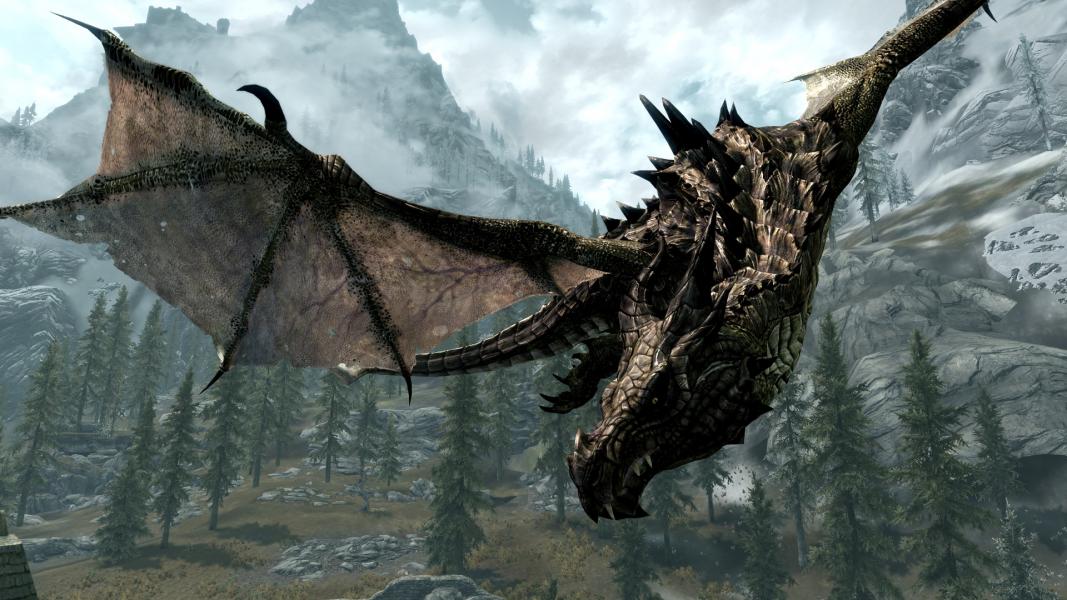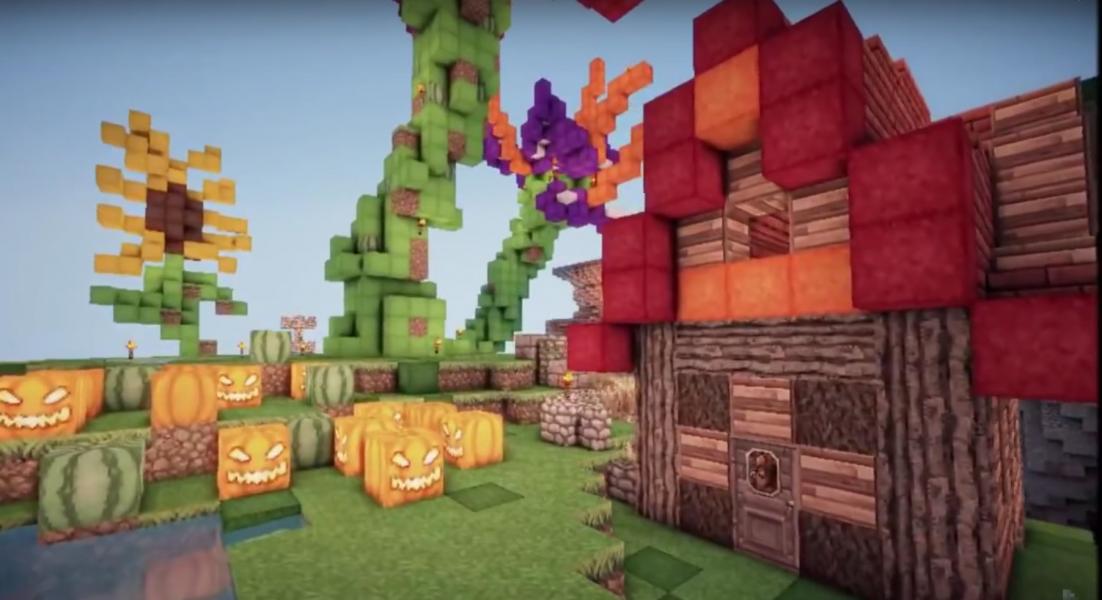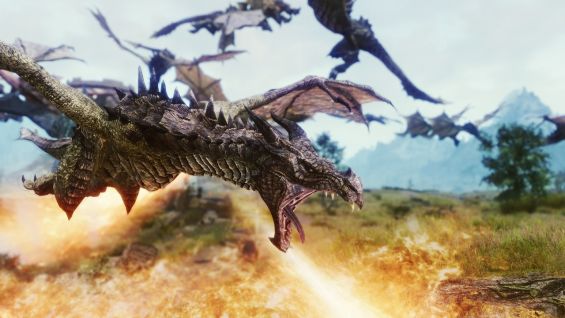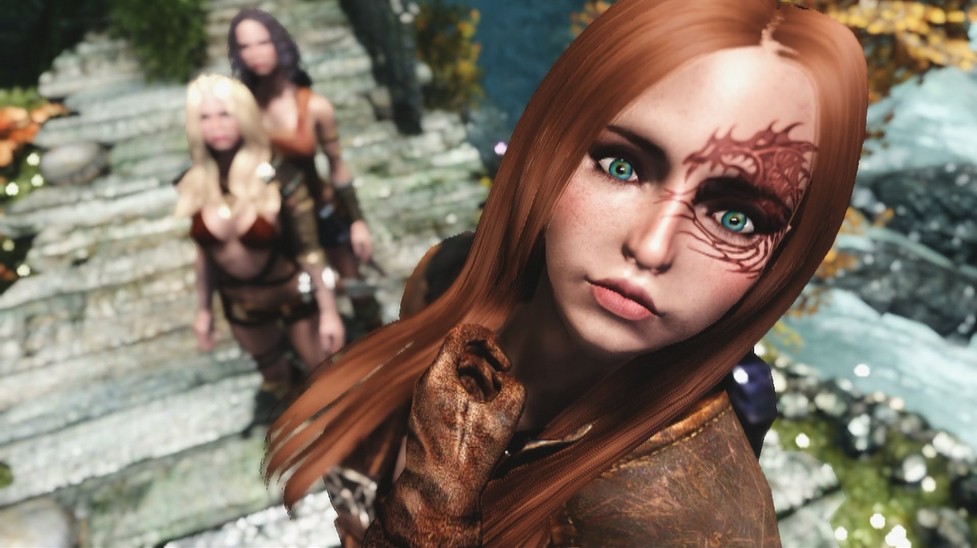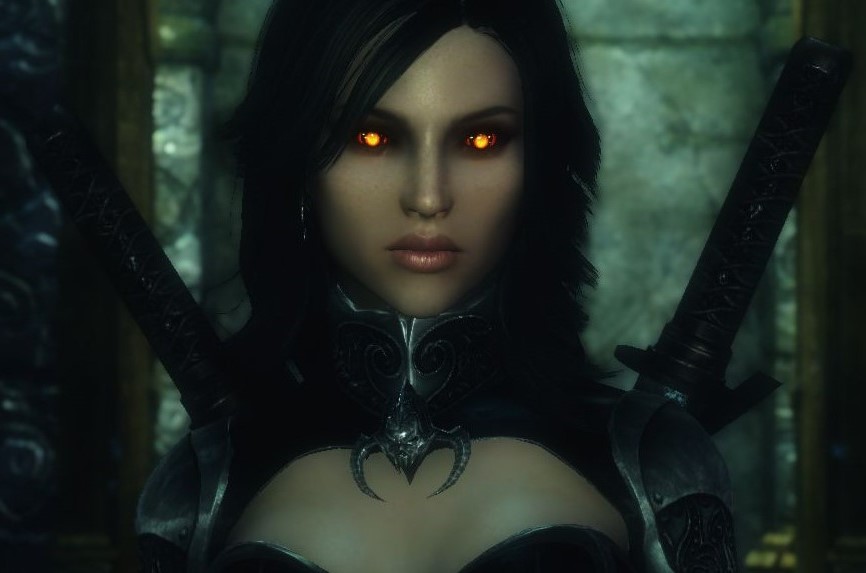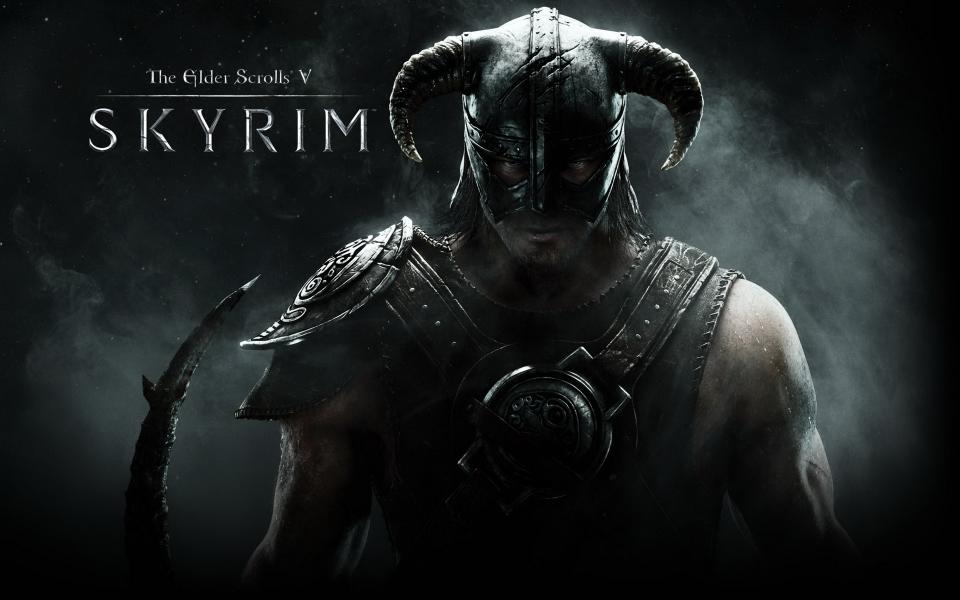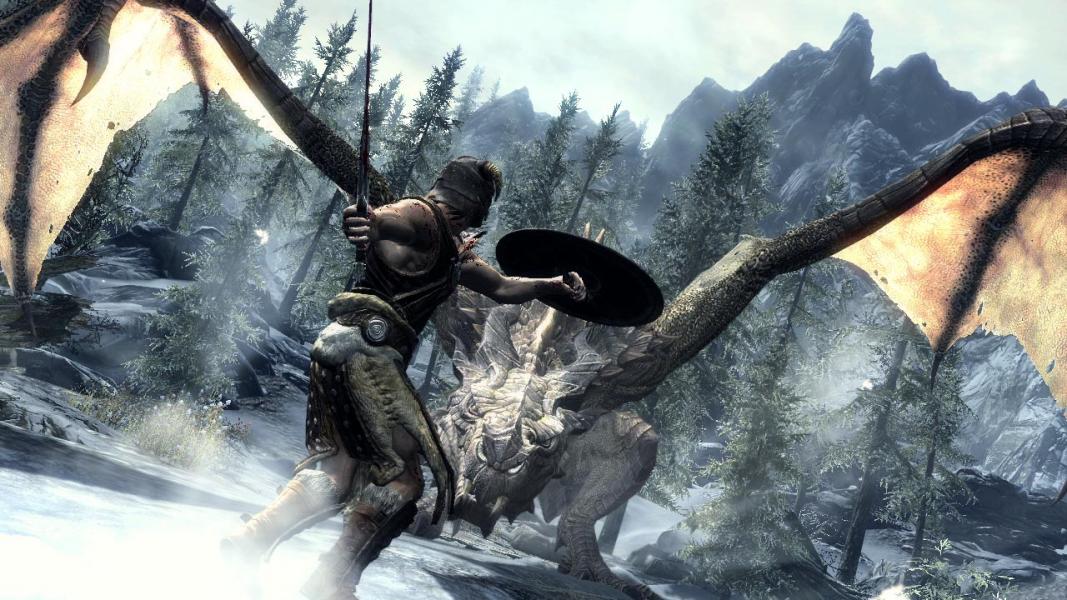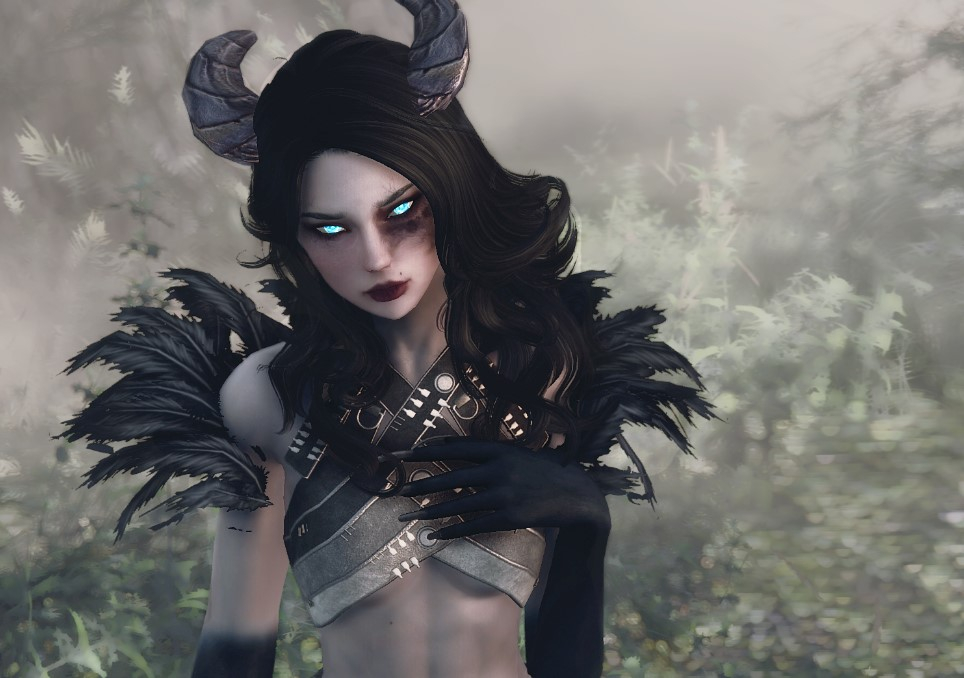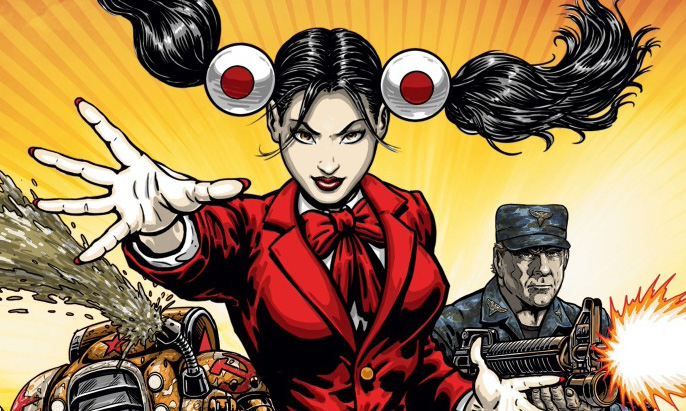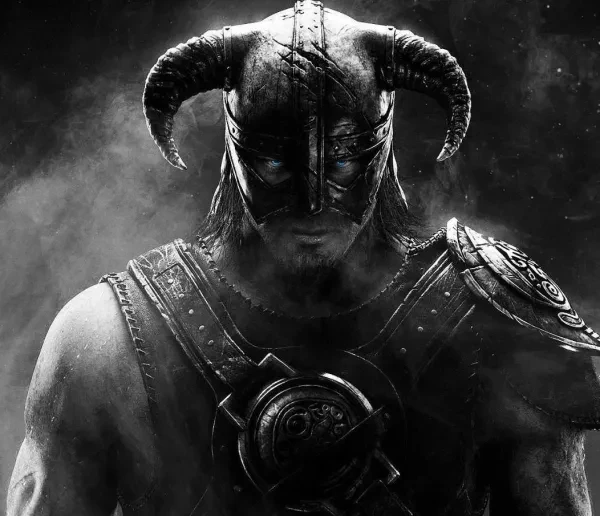
The Release Date, And 10 Features That Will Make it Awesome
At the Electronics Entertainment Expo (E3) in 2018, fans of Bethesda Game Studios’ flagship series were given a wonderfully sweet—and simultaneously bitter—surprise: the official announcement of The Elder Scrolls VI. This teaser trailer—and boy, was it ever a tease—consisted of a sweeping shot of coastal mountains and rocky plains, cues from Jeremy Soule’s brilliant soundtracks, and finally the display of the title.
But that was it. No dialogue. No subtitle. And so the wild speculation continues...
The Elder Scrolls 6 Release Date...
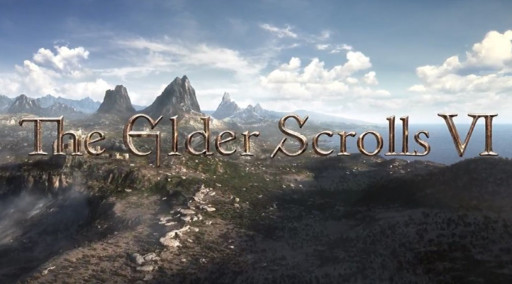
The teaser trailer's title reveal over a nameless landscape
Currently, Bethesda’s stance on a release date is somewhere between ‘eventually’ and ‘beyond eventually,’ but the most recent word of the game’s development process is that it is in ‘pre-production,’ so there’s at least someone in a dark corner somewhere scratching away at a notepad.
There is also another project currently being developed at Bethesda—a new sci-fi IP called ‘Starfield’—and it appears that this will be the developer’s next release (now that Fallout 76 has left the vault). Altogether, it’s looking like it may not be until the next console generation (whatever that may be) that we can get our hands on TES 6, but at the very least we know that it IS happening.
In the meantime, here are 10 things The Elder Scrolls 6 is gonna need in order to live up to (or beyond) our hopes and expectations...
10. Strong RPG Mechanics

Class/Statistics screen from The Elder Scrolls II: Daggerfall—not very pretty, but it was more about ‘function’ over ‘form’ (deeper role-playing versus accessibility)
Despite the love and universal acclaim received by Skyrim, one complaint that many fans had was that there seemed to be a gradual phasing-out of some of the series’ more in-depth role-playing mechanics for the sake of making it easier for new players to jump into.
A major example of this was the removal of a class-system. From Arena (TES 1) to Oblivion (TES 4), you had to choose (or create) your own class when creating a character—choosing which skills and attributes you would specialize in. This meant that your following playthrough would rely on a playstyle based around your class’s niche—a significant element of traditional role-playing and one that adds immense replay-ability value. Skyrim, by contrast, allowed your character to be less restricted (levelling up through the use of any skill at any time), and while this in itself resulted in a uniquely organic style of playing, many felt it pushed just a little too far away from the series’ RPG roots.
Hopefully the 6th can find a happy medium between the series’ role-playing legacy and a game that isn’t so insanely complex that it alienates the less ‘hard-core’ players who still want a piece of this beautiful universe (I mean who can blame ‘em?).
9. Realism
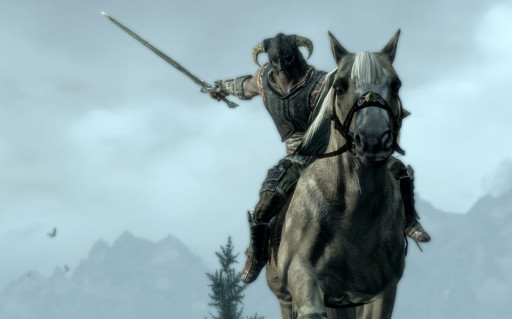
Dragonborn on horse-back in The Elder Scrolls V: Skyrim—although horses are handy, the player can run virtually non-stop anyway (regardless of how flippin’ heavy that armor must be)
Now I’m fairly sure most of us can agree that—to the best of our knowledge—dragons are not real (komodo dragons don’t have wings or breathe fire, so no they don’t count). Having said that, asking for a little realism in our Elder Scrolls games is not too much to ask for, especially in terms of an immersive, believable experience.
Skyrim definitely made the biggest leap in this respect, with gorgeous visuals, more intelligent npcs, and breathtaking sound design. This was, however, counterbalanced by gravity-defying horses trotting up sheer cliffs, couriers running across the frigid province in naught but a thin tunic and hat, and epic civil war battles roughly equal in scale to a neighborhood water-balloon fight. Of course, most of these gripes can be attributed to either technological limitations or bugs, but Bethesda will presumably be working with a whole new generation of tech—allowing for an even more realistic experience with fewer necessary compromises (we hope).
There’s also of course potential for including a ‘survival mode’ of sorts—recently introduced to Skyrim through Bethesda’s Creation Club and something that has LONG been available in the modding community. This allows for that extra degree of realism in which eating, sleeping, warmth, and avoiding disease are all as important to your survival as your armor or weapon skill levels. It would be very nice to see this included as a feature at launch.
8. Mod Support
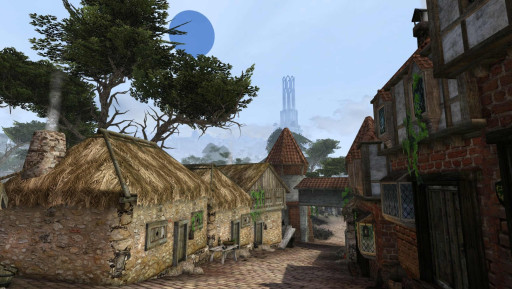
Modding in The Elder Scrolls III: Morrowind—even though it’s over 16 years old, modding can help smooth out and upgrade the dated visuals and gameplay elements
The modding community for The Elder Scrolls series is one of the largest and most dedicated of its kind. Although for the longest time the use of mods was exclusively for PC players, Bethesda’s recent releases Fallout 4 and the Skyrim: Special Edition have officially introduced the console crowd to this bottomless trove of user-made content.
The Elder Scrolls on its own is already a series known for its nearly endless replay-ability. Add the modding community into the mix and there is really no reason to stop and wonder how long it’ll be before you run out of content.
Even still, though, the breadth of content available and its accessibility to console-users is not on par with the PC. Hopefully this imbalance can be solved with time—and Akatosh knows we have more than enough of that on our hands. Aside from Bethesda’s Creation Club (which offers curated content for a price), it would be great to see The Elder Scrolls 6 implement a stronger in-game framework for the use of user-made mods.
7. Deeper Factions
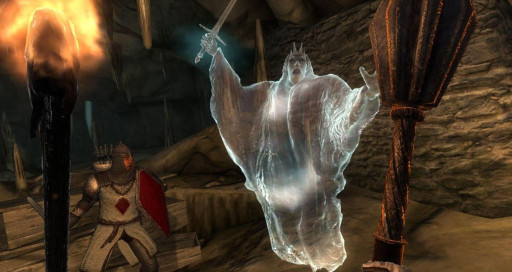
The Knights of the Nine in The Elder Scrolls IV: Oblivion—a faction/questline added through DLC
Factions (or ‘guilds’) have always played a big part in the series. Most are totally optional, but they present unique storylines and quests geared towards certain playstyles. Although the available factions themselves can change from game-to-game, there are always equivalent options for any warrior, mage, thief, or assassin to hone their skills and join up with like-minded characters.
Having said that, the complexity of these factions differs. It ranges from guilds like the different ‘Houses’ of Morrowind (TES 3)—deep, interwoven storylines filled with political intrigue, branching stories, and even the odd high-ranking pervert with a ‘thing’ for lizard-women—to a guild like The Companions in Skyrim (TES V)—an insanely cool warrior-faction that feels under-used, with a storyline that ends far too quickly and is padded out with largely random quests.
Hopefully the sixth takes some cues from Morrowind and brings back more meaning to the factions (whatever they may be at that point...).
6. Fewer Bugs
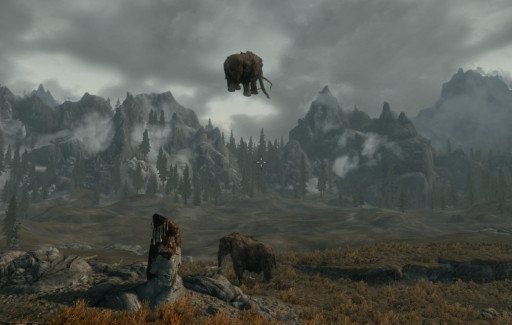
Floating mammoth glitch in The Elder Scrolls V: Skyrim—one of the game’s more silly and innocent bugs (as in it won’t necessarily crash the entire system)
Bethesda Game Studios’ reputation for releasing some of the buggiest yet nonetheless awesome games in the industry is no secret. They openly acknowledge it, and some people even consider their glitches to be an almost endearing part of the formula—probably because they’ve ALWAYS been there.
And for the longest time, we’ve been willing to cut them some slack for it, because of how amazing their games tend to be in-spite of these issues. But at this point, it’s looking like that slack-cutting is coming to a pretty abrupt end. In particular, Bethesda’s recent release of Fallout 76 appears to be the straw that broke the camel’s back. The outrage over the sad-state of this game that people paid full-price for has reached a fever-pitch, and quite understandably.
The occasional ragdoll-malfunction of a dead horse is one thing (even entertaining), but game-breaking crashes should not be something that you expect to occur whenever you play for more than 90 minutes straight. The foot DOES need to be put down, and we can hope that if one good thing comes out of this whole debacle, it may just be an Elder Scrolls title that plays smoothly at launch!
5. The Music of Jeremy Soule
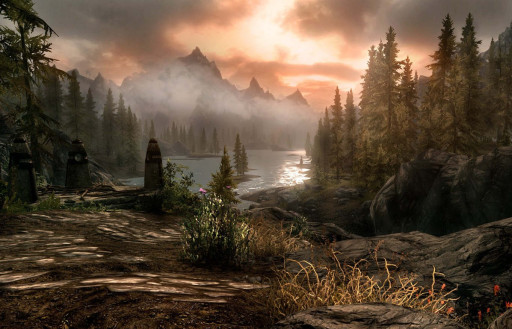
The view of Lake Ilinalta in The Elder Scrolls V: Skyrim—hard to believe that a soundtrack could be made that is able to capture such epic beauty SO perfectly
I would be utterly shocked if this wasn’t considered a ‘given.’ Jeremy Soule has been composing the soundtracks for the series since Morrowind, but it was with the massive success of Skyrim that his magnificent work was really brought to the forefront. His music has become such a significant part of the series’ identity, that it was the arrival of recognizable musical cues in the teaser trailer for The Elder Scrolls 6 that—for many of us—confirmed what it was before the title even appeared onscreen.
In each entry he has been able to capture the heart and soul of the unique world you are dropped into, and it really sticks with you. If I hear a snippet of the Morrowind score, I’m instantly transported to a land of building-sized mushrooms and those pesky cliff-racers; if I hear the Skyrim score, it’s giants lumbering across the tundra with their mammoth herds (or would they be ‘flocks’?). In many ways, Jeremy Soule’s music represents the heartbeat of The Elder Scrolls, and we don’t want TES 6 to be dead on arrival.
4. More Non-Radiant Quests
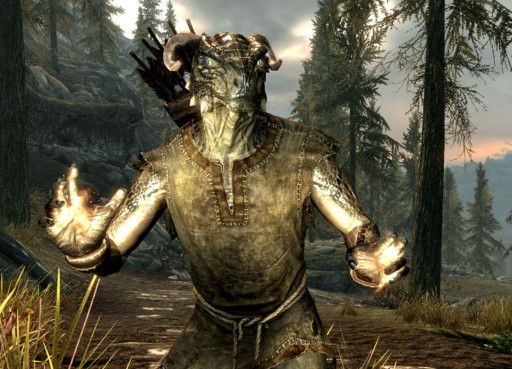
A magic-wielding Argonian in The Elder Scrolls V: Skyrim—quick shout out for the fact that dual-wielding magic and weapons should ABSOLUTELY return
While talking about the factions above (in point 7), I touched a bit on the whole ‘random quest’ thing. Specifically, this is the ‘radiant’ quest system that Bethesda debuted in Skyrim. With the goal of creating an Elder Scrolls game where there are literally unlimited things to do (a noble endeavor), they came up with a system that can randomly generate quests based around a certain framework, like “go to [dungeon name] and rescue [npc name] from [enemy type].”
Now there are some very cool elements to this: it means that each player’s experience in the game is that much more unique, and it’s nice to know that technically there is always something for you to do. However, many felt that Skyrim took it a bit too far, with shallow radiant quests replacing those with specific storylines and dedicated writing (a large part of what made the factions in turn feel shallower).
The radiant system has potential, but it should only exist as a supplement to the more complex and well-written quests already there. Here’s hoping TES 6 picks up on that...
3. Choices With Serious Consequences
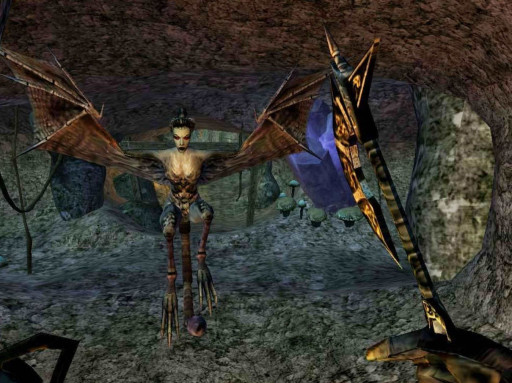
A deadly encounter in The Elder Scrolls III: Morrowind—despite its dated graphics and tech, Morrowind remains one of the richest entries in the series when it comes to lore, choice, and that sense of ‘wonder’
While choice has always been a big theme in The Elder Scrolls, it's usually been confined to smaller-scale situations with minimal impact on the world as a whole. And I get it, because the logistics of needing to carry over major choices from one game to the next (like how Bioware and CD Projekt Red do it) makes my head spin. But with games like Dragon Age: Inquisition and The Witcher 3: Wild Hunt, we see that it is of course doable and pretty damn awesome when it’s done right.
The series has flirted with the idea a few times: Daggerfall (TES 2) had 7 possible outcomes for the main storyline (which somehow canonically occurred simultaneously...); Morrowind had some weighty decisions involving the lives of certain significant-to-lore characters; and Skyrim actually allowed you to decide the outcome of a province-wide civil war—something that seems like it will be difficult to gloss over in the history books...
It remains to be seen how The Elder Scrolls 6 tackles this, and maybe they’ll be able to whip up an explanation that keeps things nice and vague, but I think it would be really cool to see some heavier consequences for your actions.
And frankly... I’d even settle for not being mocked like a whelp by guards who should be thanking me for saving the world (and their asses).
2. A Huge Map

The Imperial City in The Elder Scrolls IV: Oblivion—a massive city, but due to technical limitations Oblivion’s depiction of the capital was quite small compared to its description in lore
This is another point that should be a given, but it’s worth mentioning anyway: Scale.
Considering how long we supposedly have to wait, one can only imagine what game engines will be capable of by then.
Maps in this series have always been big, but the scale of things have gotten a little bit skewed. This doesn’t mean we need something like Daggerfall’s (TES 2) Great Britain-sized map, but something that is at least big enough that it feels a bit more in-line with the series’ lore. For instance, it’s a bit weird to read a book in-game that details a two-week long journey that you can make in 25 minutes on foot.
Now of course that’s not to say we need something of that scope (because that’s insane), but rather a map size that can keep that suspension-of-disbelief going strong. Having said all of that, even with better tech there’s still the matter of how much work it takes to hand-design something of that scale—so we may not end up with something THAT much bigger than Skyrim or Fallout 4, but no doubt it will be a step up anyway.
1. More Armor, Weapons, Enemies, Bosses, EVERYTHING!
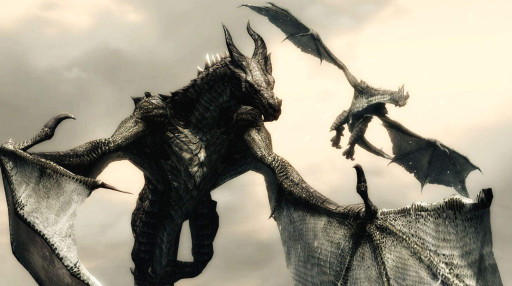
Dragons in flight, from The Elder Scrolls V: Skyrim—fighting dragons in Skyrim was actually the first time the series presented an enemy that was SO different to fight compared to everything else
This one’s a no-brainer. WE WANT MORE!
It’s really a simple way of simultaneously increasing immersion and enriching gameplay. A greater variety of weapons and armor means fewer characters running around with identical equipment, and greater incentive to explore, loot, and progress. A larger range of enemies can mean less repetitive combat and/or the need to adopt different play-styles depending on what or whom you’re fighting.
And having some legitimately deadly bosses to challenge is never dull, and acts as a good way of testing your character’s mettle, but they could be a little bit more interesting. Bosses that are just the same as other enemies except with more health and higher damage don’t really feel that interesting. It would really be great to see more bosses in the 6th that actually present more unique gameplay dynamics—sort of like the ice-diving dragons in Skyrim’s Dawnguard DLC.
I’m sure there’s more, but M’aiq is tired now...
In the end, I guess we really (unsurprisingly) just want more of everything—except bugs (WAY fewer bugs please)!
The Elder Scrolls 6 is definitely a title to be excited about (I know I am)—just maybe try to keep it reigned in a little, since it could be a bit of a wait... In the meantime, I think I’ll hop back into Skyrim, grab enough mods to fill a giant’s mammoth-cheese sack, and maybe finally get around to writing my fanfic follow-up to The Lusty Argonian Maid...
You may also be interested in:

